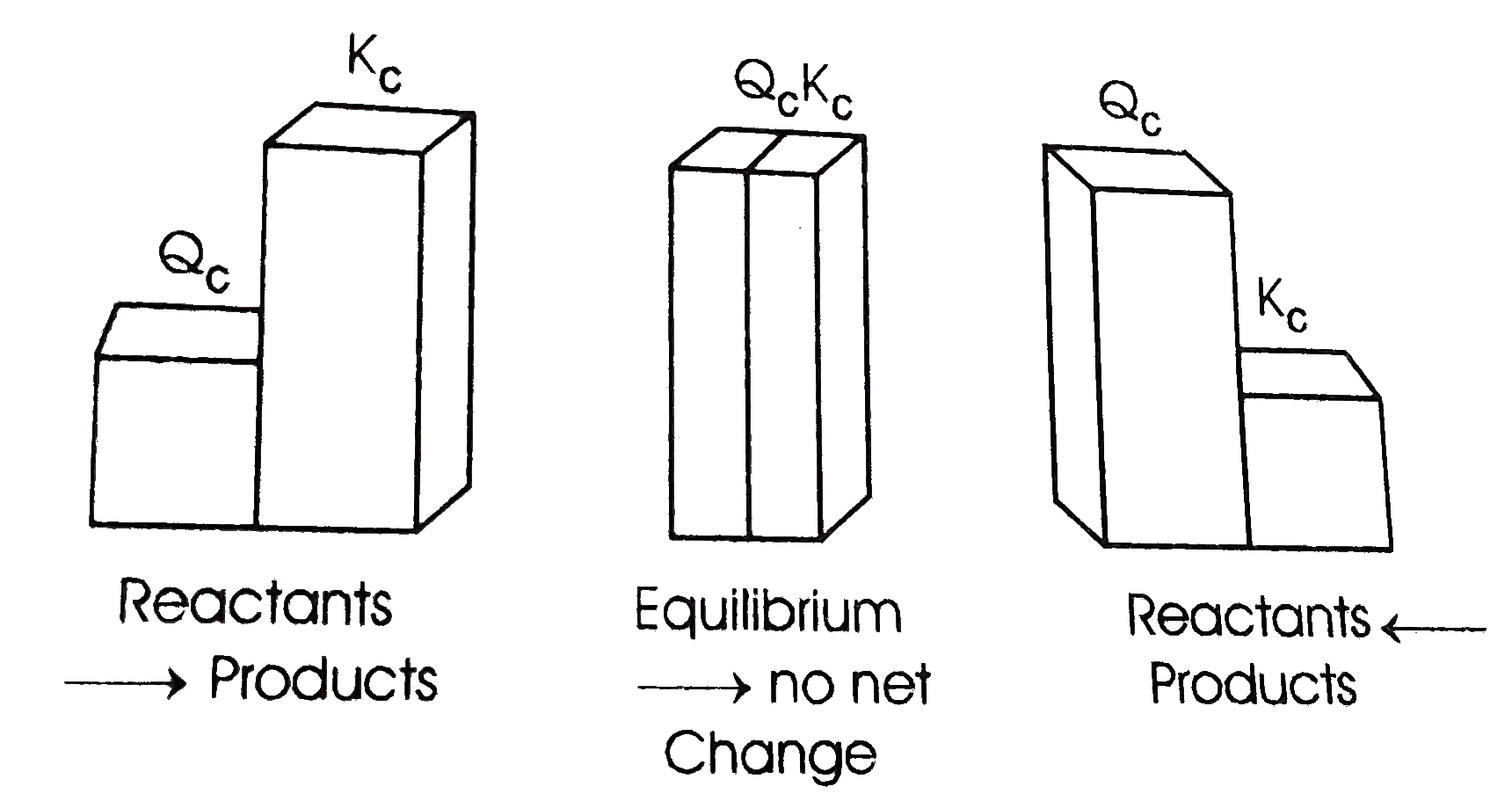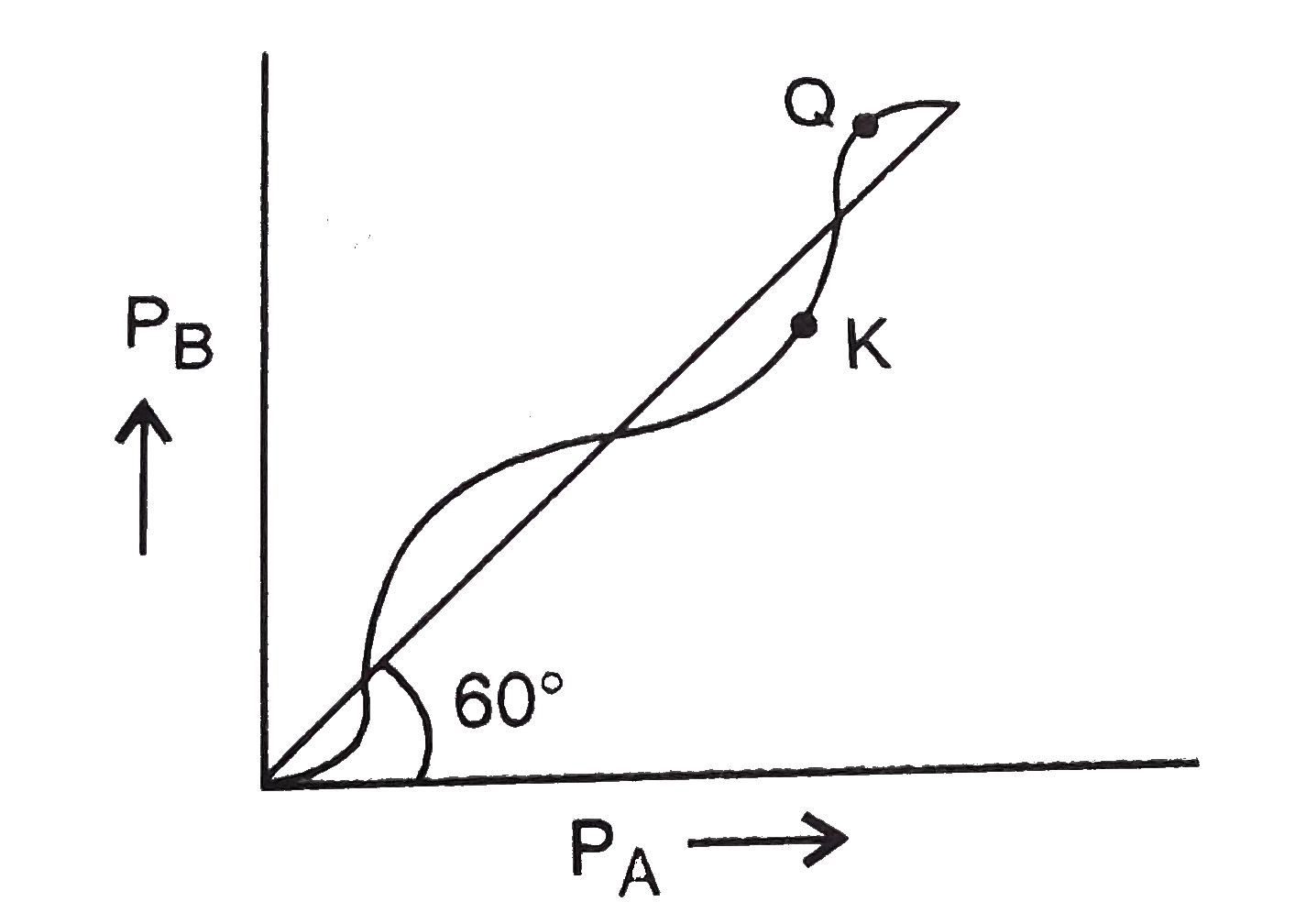For a reaction the free energy change, ΔG=−RT ln Kp+RTlnQp where KP = equilibrium constant, QP= reaction quotient. For the reaction to be in equilibrium state
QpKp>1
QpKp<1
QpKp=1
QpKp=1
The correct Answer is:C
Topper's Solved these Questions
- EQUILIBRIUMBOOK - DISHA PUBLICATIONCHAPTER - EQUILIBRIUMEXERCISE - Exercise-1: Concept Builder (Topicwise) (TOPIC 2: Relation between K, Q, G and Factors Effecting Equilibrium)
9 Videos
- EQUILIBRIUMBOOK - DISHA PUBLICATIONCHAPTER - EQUILIBRIUMEXERCISE - Exercise-1: Concept Builder (Topicwise) TOPIC 3: Theories of Acids and Bases, lonic Product of Water and pH Scale )
13 Videos
- EQUILIBRIUMBOOK - DISHA PUBLICATIONCHAPTER - EQUILIBRIUMEXERCISE - Exercise-2 : Concept Applicator
30 Videos
- ENVIRONMENTAL CHEMISTRY BOOK - DISHA PUBLICATIONCHAPTER - ENVIRONMENTAL CHEMISTRY EXERCISE - Exercise -2 : Concept Applicator
15 Videos
- GENERAL PRINCIPLES AND PROCESSES OF ISOLATION OF ELEMENTSBOOK - DISHA PUBLICATIONCHAPTER - GENERAL PRINCIPLES AND PROCESSES OF ISOLATION OF ELEMENTSEXERCISE - EXERCISE -1: CONCEPT APPLICATOR
35 Videos
Similar Questions
Knowledge Check
If equilibrium constant for a reaction is K, then standard free energy change is :
AΔG∘=−RTlogKBΔG∘=RTInKCΔG∘RT=−logKDΔG∘RT=−2.303logKThs standard free energy change ΔG∘ is related to K (equilibrium constant ) as
AKp=−RTlnΔG∘BK=(eRT)ΔG∘CKp=ΔG∘RTDKp=e−ΔG∘/RTThe standard free energy change ΔG∘ is related to equilibrium constant Kp as
AKp=e−ΔG∘RTBKP=−ΔG∘RTCKp=RTInΔG∘DΔG=e−KpRT
The relationship between equilibrium constants KpandKc for a gaseous reaction is:
View SolutionConsider the expression ΔG=−RT In Kp+RT In Qp and select the correct statement at equilibrium
where QpandKp term refer to reaction quotient and eq uilibrium constant at constant pressure respectively.
View Solutionlog KpKc+log RT=0 is a relationship for the reaction :
View SolutionThe reaction which is in dynamic equilibrium, ensured us, that the reaction is reversible . But if that the reaction is in equilibrium. The reaction quotient predict either the reversible reaction is in equilibrium or tries to achieve equilibrium. In those reactions which have not achieved equilibrium, we obtain reaction quotient Qc in place of equilibrium constant (Kc) by substituting the concentration of reactant and product at the time, at whih we have to calculate the value of Qc . To determine the direction at which the net reaction will proceed to achieve equilibrium, we compare values of Qc and Kc. The three possible cases are shown as comparison of Kc and Qc in the following figures.

Change in Gibbs free energy, i.e., ΔG is the driving force of any reaction.
For spontaneous reaction , ΔG=−ve
For non-spontaneous reaction , ΔG=+ve
For reaction at equilibrium , ΔG=0
Thermodynamically, we know that
ΔG=ΔG∘+RTlnQ, where Q is reaction quotient and ΔG∘= change in Gibbs energy at standard condition.
For equilibrium A(g)⇔B(g)(Keq=1.732) If the pressure of the system [varied by introducing a stream of A(g) and B (g) is represented by the curve at constant temperature T.

What will be the value of difference of standard Gibbs free energy to Gibbs free energy change at point Q in the figure above ?
View SolutionThe equilibrium constant Kp for the reaction H2(g)+I2(g)⇔2HI(g) changes if:
View Solution
